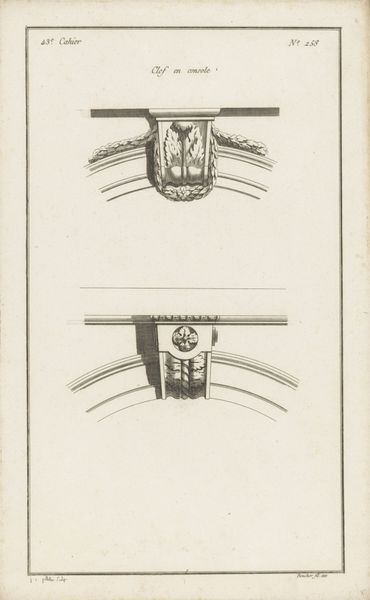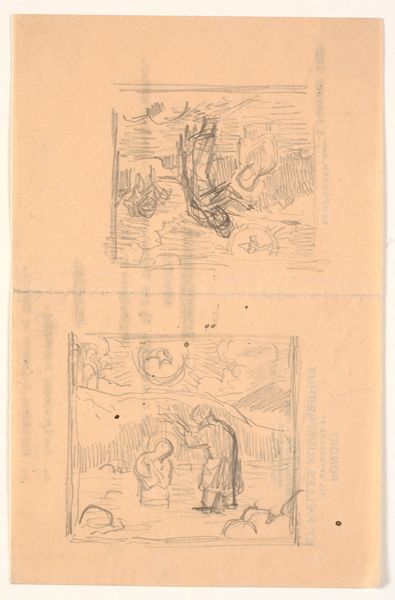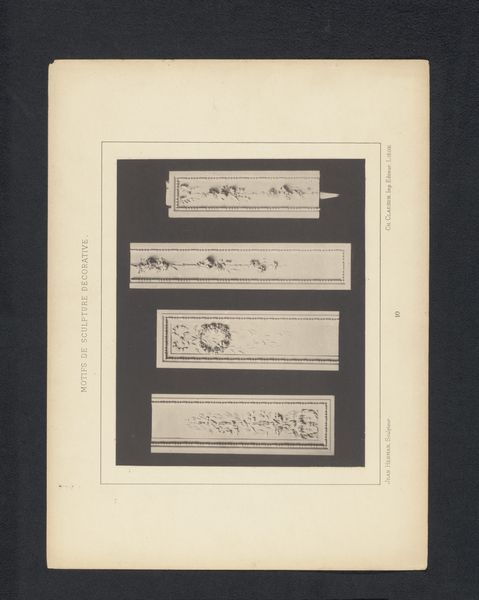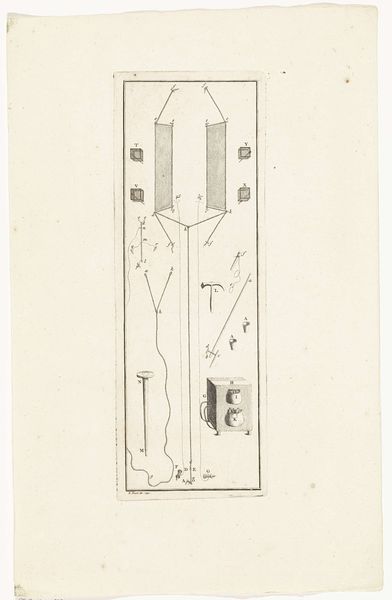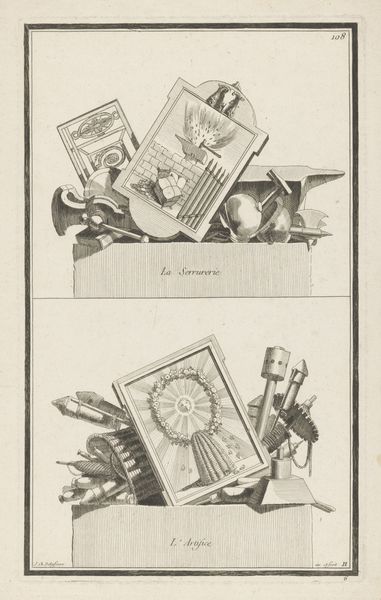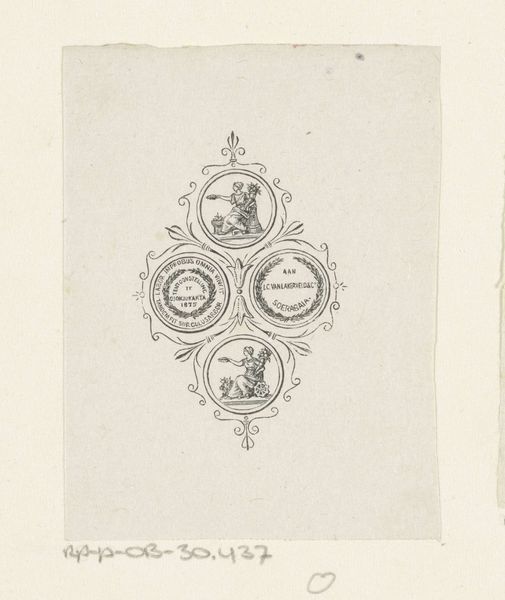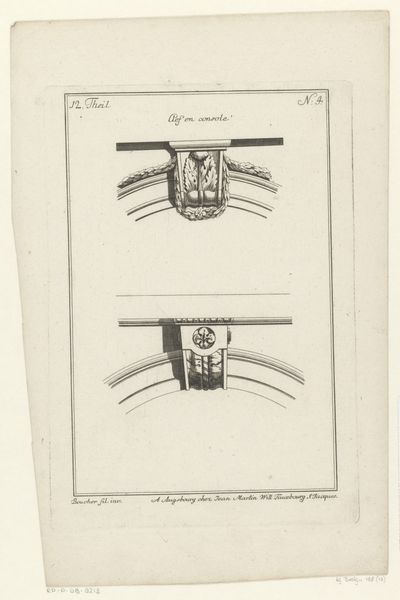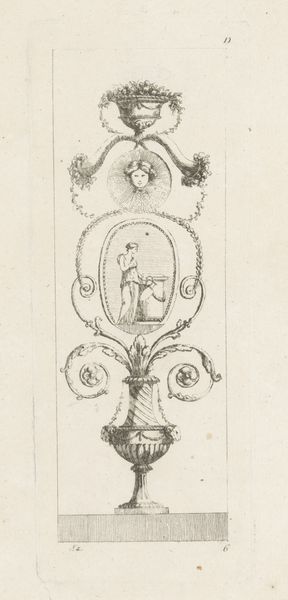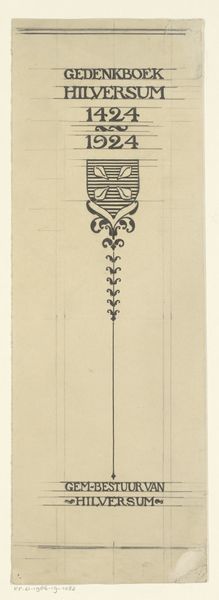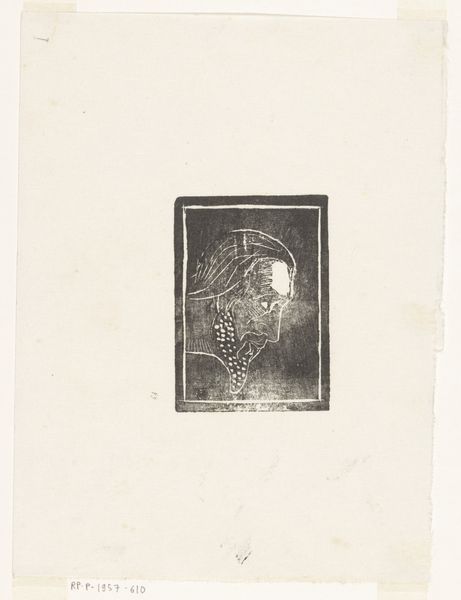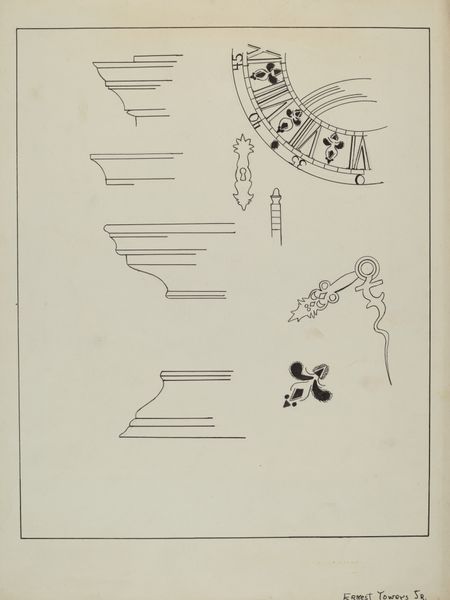
drawing, ornament, print, paper, ink, engraving
#
drawing
#
neoclacissism
#
ornament
# print
#
old engraving style
#
paper
#
ink
#
line
#
engraving
Dimensions: height 284 mm, width 198 mm
Copyright: Rijks Museum: Open Domain
Curator: This intriguing engraving is called "Consoles met schelp en gezicht," dating back to somewhere between 1746 and 1782. Its author remains anonymous. It’s currently held here at the Rijksmuseum. Editor: My initial impression is that it evokes a cool formality. The crisp lines and contrasting values give it a sense of calculated precision. Is this an architect's study, perhaps? Curator: Precisely! These were design concepts for ornamentation, showcasing neoclassical elements. What's fascinating is that even these decorative arts were deeply affected by shifting social and political sensibilities. The transition into Neoclassicism mirrored broader desires for rationalism and order, a conscious rejection of Rococo extravagance often associated with aristocratic excess. Editor: The symmetrical composition of each console is meticulously balanced. Look at the upper design: a shell motif anchoring grape vines on either side. Then, below, a serene face nestled within draped ornamentation. The linear execution gives each form a Platonic solidity, wouldn’t you agree? Curator: Certainly, but I think the placement of that face forces a more humanist reading. These weren’t just designs, they reflected a worldview that positioned humanity and, crucially, European ideals of beauty and intellect as central to even decorative projects. We can see, if we look closer, that the objectification inherent in ornamental art reinforces existing power dynamics. Whose faces were elevated in this way? Who had the authority to create and disseminate such images? Editor: A valid point. Though, I would argue, we also cannot ignore the elegant calibration of shadow and light that creates depth. See how the engraver used carefully hatched lines to define the curvature of the shell, the plumpness of the grapes, or the soft modelling of that almost ethereal face? It speaks to an extraordinary technical skill, wouldn’t you concede? Curator: I do! These objects aren’t monolithic statements, and that interplay you pointed out speaks to the engraver's own interpretation. We must simply stay critically aware of the ideologies these images were used to perpetuate and remember the anonymous status assigned to this creator! Editor: An imperative point. Thank you for enriching my visual reading with those ideas. Curator: And you mine. This detailed work encourages ongoing dialogue.
Comments
No comments
Be the first to comment and join the conversation on the ultimate creative platform.
